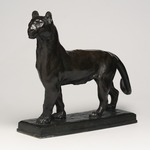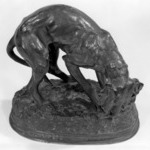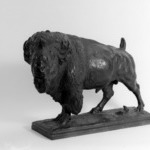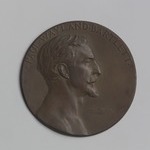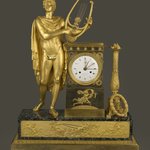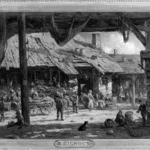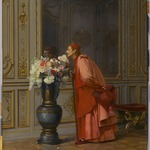
Ugolino, Torso of a Child (Ugolin, Torse d'un enfant)
European Art
This torso is a fragment from a group called Ugolino and His Sons that appears in The Gates of Hell. Ugolino was an Italian count imprisoned with his sons and grandchildren, who were all left to starve. Eventually driven mad by hunger, he devoured the flesh of his offspring. In Dante’s Divine Comedy, Ugolino suffered eternal damnation.
This figure is derived from one of Ugolino’s fallen sons in the larger group who reaches his arm up and across his crawling father’s back, trying to lift himself up. Even separated from this narrative, the torso effectively conveys despair. In its extreme simplification of form this sculpture anticipates the modernist work of Constantin Brancusi, who served briefly as a technician in Rodin’s workshop in 1907.
This figure is derived from one of Ugolino’s fallen sons in the larger group who reaches his arm up and across his crawling father’s back, trying to lift himself up. Even separated from this narrative, the torso effectively conveys despair. In its extreme simplification of form this sculpture anticipates the modernist work of Constantin Brancusi, who served briefly as a technician in Rodin’s workshop in 1907.
CAST BY
Émile Godard Fondeur, Paris
MEDIUM
Bronze
DATES
model date unknown; cast 1980
DIMENSIONS
9 1/2 x 6 7/8 x 5 1/2 in. (24.1 x 17.5 x 14.0 cm) (show scale)



MARKINGS
Lower edge, proper left thigh: "E. GODARD Fondr."
Back, underside of truncation: "© by MUSEE RODIN 1980"
SIGNATURE
Underside, proper right leg: "A. Rodin"
INSCRIPTIONS
Underside, proper right leg: "No 2"
COLLECTIONS
European Art
ACCESSION NUMBER
84.76
CREDIT LINE
Gift of B. Gerald Cantor Collection
EXHIBITIONS
MUSEUM LOCATION
This item is not on view
CAPTION
Auguste Rodin (French, 1840–1917). Ugolino, Torso of a Child (Ugolin, Torse d'un enfant), model date unknown; cast 1980. Bronze, 9 1/2 x 6 7/8 x 5 1/2 in. (24.1 x 17.5 x 14.0 cm). Brooklyn Museum, Gift of B. Gerald Cantor Collection, 84.76. Creative Commons-BY (Photo: Brooklyn Museum, 84.76_bw.jpg)
EDITION
Edition: 2/12
IMAGE
overall, 84.76_bw.jpg. Brooklyn Museum photograph
"CUR" at the beginning of an image file name means that the image was created by a curatorial staff member. These study images may be digital point-and-shoot photographs, when we don\'t yet have high-quality studio photography, or they may be scans of older negatives, slides, or photographic prints, providing historical documentation of the object.
RIGHTS STATEMENT
Creative Commons-BY
You may download and use Brooklyn Museum images of this three-dimensional work in accordance with a Creative Commons license. Fair use, as understood under the United States Copyright Act, may also apply.
Please include caption information from this page and credit the Brooklyn Museum. If you need a high resolution file, please fill out our online application form (charges apply).
For further information about copyright, we recommend resources at the United States Library of Congress, Cornell University, Copyright and Cultural Institutions: Guidelines for U.S. Libraries, Archives, and Museums, and Copyright Watch.
For more information about the Museum's rights project, including how rights types are assigned, please see our blog posts on copyright.
If you have any information regarding this work and rights to it, please contact copyright@brooklynmuseum.org.
RECORD COMPLETENESS
Not every record you will find here is complete. More information is available for some works than for others, and some entries have been updated more recently. Records are frequently reviewed and revised, and we welcome any additional information you might have.

